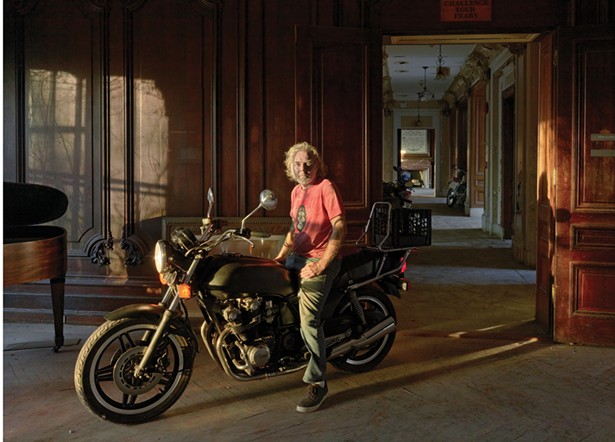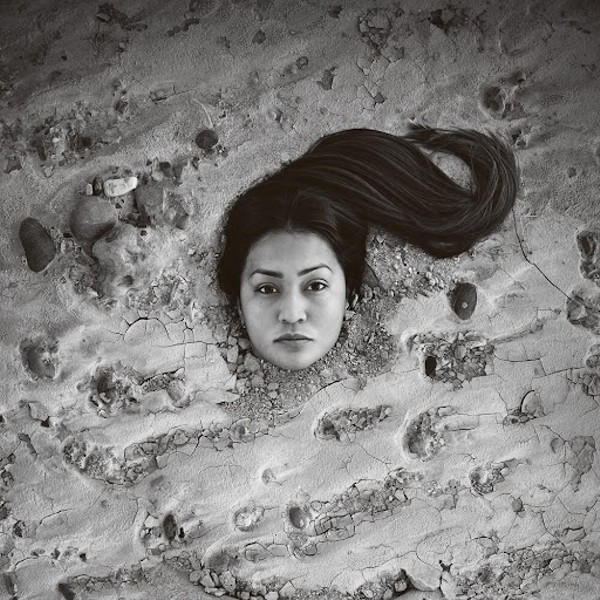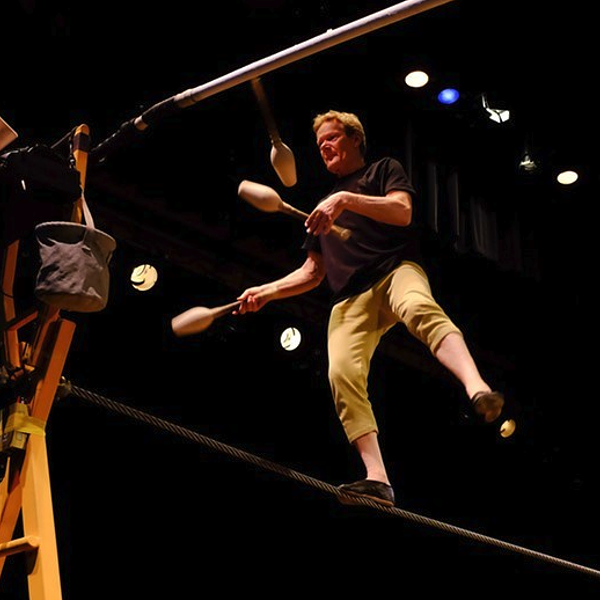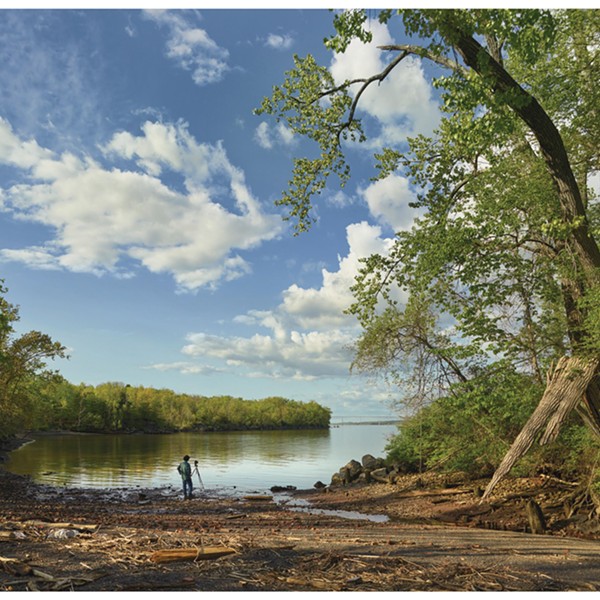A gambler rolls the dice. A photographer picks up a camera and walks out into the street. Both of them confront the agonies of chance, of luck, of fate. Both can win big or go down in flames. The danger of being an artist or a gambler is that you can utterly lose faith in yourself.
Andrew Moore has succeeded in the uncertain world of photography. His work is included in dozens of museums, including the Smithsonian and the Whitney. His photos have appeared in the New Yorker, National Geographic, the New York Times Magazine, the Paris Review, and many other journals. He's published eight books of photos.
Yet at first one might mistake his pictures for snapshots. Hank at Dougrey's Hall shows a man and his dog on scaffolding next to a building in Troy with a huge "Biden" banner. The handmade sign is reminiscent of a castaway on a desert island writing "HELP!" in giant letters, for a stray airplane to see. Many of us felt this sort of desperation during the last election. The rickety wooden platform emphasizes the precariousness of Hank's plight. (In fact, this platform is a homemade balcony. Hank is an artist who has lived in this house—which was once an Irish social club—for 25 years.)
Moore moved to the Hudson Valley two years ago, and is enthusiastic about exploring the area, the same way he has investigated Russia and Abu Dhabi in photographic essays. The images in this spread were all taken in the last six months. "My assistant and I, we're kind of like private investigators," Moore explains. "We go out, knock on doors; there's a lot of dead ends. You gotta check out all the leads."
When you first see Erik at Rock Ledge, you think, "What's a motorcycle doing in a living room—next to a grand piano?" The juxtaposition seems impossible, like a ship in a bottle. But when you look closely, you see that the doorway is quite large, and in fact two other motorbikes are protruding from rooms down the hall.
Another question: Did Moore set up the shot? I am in the enviable position, as an art critic, of being able to ask the artist the backstory, but a visitor to an art gallery seeing these pictures can't know. Yet there's a certain sincerity in Moore's photographs. They don't seem to be constructed, like ads for Smirnoff vodka.
In fact, Rock Ledge is a mansion that became a rehab center for Daytop Village, and is presently unused. Erik is the caretaker, and stores his motorcycles there. He's also responsible for the sign "Challenge Your Fears" above the doorway. On a wall at the rear of the hallway are some Daytop Village slogans. (Moore's photographs are intended to be printed in large format, where telling details become easily visible.)
Moore was very forthcoming in his conversation with me, but there was one secret he wouldn't reveal: the story behind Forest East Room, an image of a white-curtained window behind a velvet rope. (The artist privately calls it "The Museum of Nothing.")
Moore takes a great deal of care with his titles, incidentally. He doesn't want to reveal too much, and transform the photos into journalism. He always includes the location and year, however, to give some historical context.
One of Moore's subgenres is portraits without people. Jane's Suitcase depicts a bed with a traveling case and a book resting on it. Of the three pillows, only one shows the impression of a head. We sense Jane's presence—even her regrets—without seeing her. Sicilian Defense at Tivoli Mike's is a close-up of an outdoor chessboard, set up for a game, with leaves strewn across it. Two moves have been made, one on each side. (The "Sicilian Defense" is a famous chess opening.) Who were these players who abandoned their game after a single move, allowing autumn leaves to decorate the board? Did they suddenly decide to make love? Was there a family emergency? Did they collectively realize they hate chess?
When I was a kid, there was a cartoon character named Mr. Mum who appeared daily in the New York Post. He was a bald, bespectacled, middle-aged gentleman who walked through life silently observing. Mr. Mum would encounter outlandish scenes: two armed robbers robbing each other, a man at a lost and found retrieving his own head. He never spoke, but he looked bewildered. Moore's photographs remind me of the singular discoveries of Mr. Mum.




















